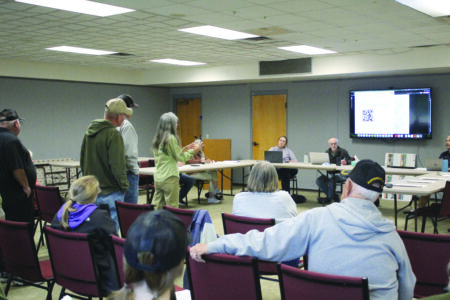Sea lamprey control planned for Lake Superior tributary in Alger County
MARQUETTE — U.S. Fish and Wildlife Service personnel will apply lampricides to the Sucker River in Alger County to eliminate sea lamprey larvae burrowed in the stream bottom. Applications will be conducted between July 15-24, in accordance with state permits. Application dates are tentative and may be changed based upon local weather or stream conditions near the time of treatment.
Sea lamprey larvae live in hundreds of Great Lakes tributaries and transform to parasites that migrate to the Great Lakes and kill fish by feeding on their blood and body fluids. Failure to kill sea lamprey larvae in streams will result in significant damage to the Great Lakes fishery. Infested tributaries must be treated on a regular basis with lampricides to control sea lamprey populations.
Extensive preparations and precautions are required to deliver a safe and effective stream treatment. Prior to treatment, trained personnel collect data on stream water chemistry and discharge. In addition, they may conduct on-site toxicity tests and stream flow studies with non-harmful dyes that cause stream water to appear red or green.
Lampricides are carefully metered into the stream for approximately 12 hours, and continually analyzed at predetermined sites to ensure proper concentrations are maintained as they move downstream. Applicators are trained and certified by regulatory agencies for aquatic applications of pesticides.
The U. S. Environmental Protection Agency and Health Canada Pest Management Regulatory Agency have reviewed human health and environmental safety data for lampricides, and in 2003 concluded that the lampricides (lampricide and bayluscide) pose no unreasonable risk to the general population and the environment when applied at concentrations necessary to control larval sea lampreys. However, as with any pesticide, the public is advised to use discretion and minimize unnecessary exposure. Lampricides are selectively toxic to sea lampreys, but a few fish, insect and broadleaf plants are sensitive. Persons confining bait fish or other organisms in stream water are advised to use an alternate water source because lampricides may cause mortality among aquatic organisms stressed by crowding and handling. Agricultural irrigation must be suspended for 24 hours, during and following treatment.
Under the Convention on Great Lakes Fisheries, the Great Lakes Fishery Commission is responsible for developing and implementing sea lamprey control through the Great Lakes basin, which it does through contractual arrangements with the U.S. Fish and Wildlife Service and Fisheries and Oceans Canada. The Commission initiated chemical control of sea lampreys in 1958. Since that time, the highly successful program has contributed significantly to the maintenance of the $7 billion Great Lakes sport and commercial fisheries.
To reach the Marquette Biological Station call 1-906-226-2657 or to reach the Ludington Biological Station call 1-231-843-7300.




